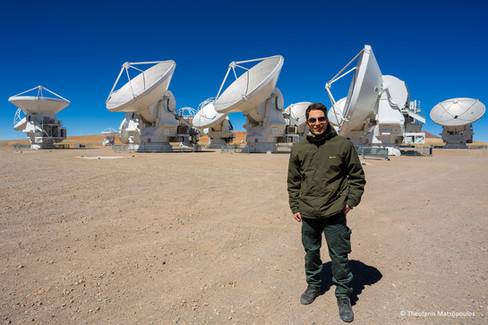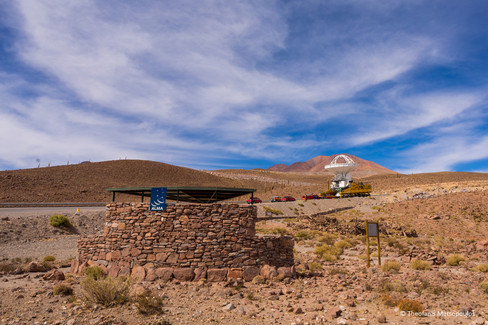ALMA: Listening to the Universe
- Theofanis Matsopoulos
- Sep 23
- 2 min read
Updated: Sep 30
High in the Chilean Andes, at over 5,000 meters above sea level, lies one of the most extraordinary astronomical facilities on Earth: the Atacama Large Millimeter/submillimeter Array (ALMA). Located on the Chajnantor Plateau, ALMA is not just an observatory, it’s the world’s most powerful radio telescope of its kind, capable of unveiling the invisible universe. My visit here was part of an official ESO photo and video expedition.

A New Window on the Cosmos
Unlike traditional optical observatories, ALMA operates at millimeter and submillimeter wavelengths, allowing astronomers to peer through cosmic dust clouds that block visible light. It is composed of 66 high-precision antennas, each 12 or 7 meters in diameter, spread across distances of up to 16 kilometers. Working together as a single interferometer, they can resolve details in distant galaxies and star-forming regions with breathtaking sharpness.
ALMA has revolutionized astronomy. It has imaged the disks where planets form around young stars, mapped the structure of distant galaxies in the early universe, and even contributed to the Event Horizon Telescope project, which produced the first-ever image of a black hole. Walking among its massive antennas, surrounded by a barren desert plateau and thin mountain air, was a humbling reminder of how far human ingenuity has reached.
The Harsh Beauty of Chajnantor
Filming and photographing at ALMA is unlike any other expedition. At 5,000 meters, oxygen levels are less than half of what they are at sea level. Breathing becomes a conscious effort, and even light physical activity can leave you exhausted. Working with heavy gear, requires careful pacing and safety precautions.
The desert dryness adds to the challenge. The Atacama is one of the driest places on Earth, with near-zero humidity, which is why it is so ideal for millimeter-wave astronomy. But the same conditions take their toll on people and equipment: skin cracks, lips dry quickly, and electronics are constantly stressed by dust and temperature extremes. Despite the harsh environment, the skies above ALMA are astonishingly clear, opening a unique window to the cosmos.
Bringing ALMA to the World
This expedition, as with my other visits to major observatories, was about more than just collecting images. It was about storytelling, about conveying what it feels like to stand at the edge of the habitable world, among instruments designed to probe the farthest corners of the universe.
ALMA is not only a marvel of engineering, but also a testament to international collaboration, uniting scientists from across the globe in pursuit of cosmic understanding. Being there, on the roof of the world, was an unforgettable experience — one that I’m honored to share through the lens of immersive cinema.











